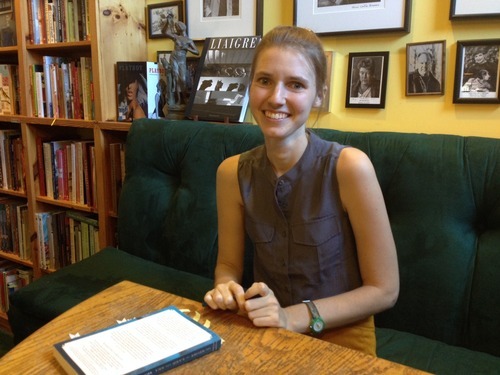By Jim Ewing
Special to The Clarion-Ledger
 On one level, The Marauders, a first novel by Tom Cooper, is the story of a treasure seeker with a metal detector looking for the buried bounty of Jean Lafitte.
On one level, The Marauders, a first novel by Tom Cooper, is the story of a treasure seeker with a metal detector looking for the buried bounty of Jean Lafitte.
Set in the fictional town of Jeanette in the Bataria region north of New Orleans where the famous pirate once roamed, it also is a realistic and detailed tale of despair among shrimpers and others who make their living from the water in the days after the twin tragedies of the Gulf Oil Spill and Hurricane Katrina.
In that way, The Marauders provides a fictional base for an all-too-real reality: the destruction of people’s homes, families, livelihoods due to natural and man-made disasters.
The plot is carried along by five sets of characters:
— Wes, a young man, and his father who lost their mother/wife to the storm surge of Katrina;
— Two felonious small-time hustlers who are seeking to rob and swindle their way to wealth;
— A set of monstrously evil twin brothers and their secret island of illegal marijuana;
— A miserable representative of the oil company trying get his former neighbors to sign on to a cut-rate settlement, hating himself for it and hating the region he has been trying to put behind him;
— The treasure-seeker, Lindquist, a one-armed man addicted to pain pills and living in the wreckage remaining from his broken marriage.
In the tradition of John Steinbeck’s Cannery Row, Cooper with The Marauders uses fiction to expose to the public the grinding inequities and institutional unfairness facing a people trying to make do with less and less in a world where every card is seemingly dealt against them.
That story, in real life, is still playing out — witness the recent news stories where BP attorneys are disputing U.S. Justice Department claims that the accident “caused serious and widespread sociocultural harm to coastal communities.”
On a more symbolic note, the one-armed man, Lindquist, is a Gulf Coast Everyman desperately trying against all odds to find something valuable and good in the muck and ruin of a world breaking bad.
But to readers The Marauders is a good read filled with believable characters of the type found in this region. The suspense builds as the lives of those characters entwine with sometimes predictable and sometimes surprising results.
There are some criticisms that can be made. The plot moves slowly as Cooper spends a great deal of time building such a relatively large cast of main characters that exemplify the various facets of circumstances and despair arising from the disasters.
Then, some readers not familiar with the region might need that amount of detail. It’s well written and only slows the pace a bit. Too, Cooper could have added some layers of depth to the characters. More accomplished authors learn to weave small details that give nuance to relationships. But these are minor flaws that come with time, and polish.
As a first novel set in New Orleans and environs, Cooper’s Marauders shines for its local flavor, colorful characters and picturesque scenes. Let’s hope Cooper continues to write more thrillers set in this locale for many years to come By the way, The Marauders would make a dynamite movie!
Jim Ewing, a former writer and editor at The Clarion-Ledger, is the author of seven books including Conscious Food: Sustainable Growing, Spiritual Eating, and the forthcoming Redefining Manhood: A Guide for Men and Those Who Love Them, Spring 2015. Jim is a regular contributor to the Lemuria blog.


 Barry Gifford explains in the beginning of his
Barry Gifford explains in the beginning of his  Gifford’s Sailor and Lula became popular in the 1990s. Readers might remember the film adaptation of the first S&L book Wild at Heart (1990) starring Nicolas Cage and Laura Dern.
Gifford’s Sailor and Lula became popular in the 1990s. Readers might remember the film adaptation of the first S&L book Wild at Heart (1990) starring Nicolas Cage and Laura Dern. That continues in Up-Down, which is subtitled “The almost lost, last Sailor and Lula story, in which their son, Pace Roscoe Ripley, finds his way.”
That continues in Up-Down, which is subtitled “The almost lost, last Sailor and Lula story, in which their son, Pace Roscoe Ripley, finds his way.”






 I scrounged enough clear pieces to create a “stained glass cross” behind the altar.
I scrounged enough clear pieces to create a “stained glass cross” behind the altar.

